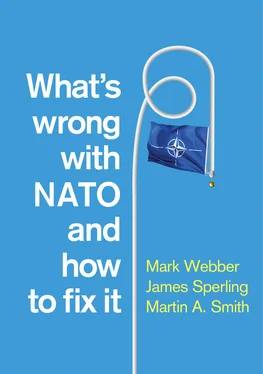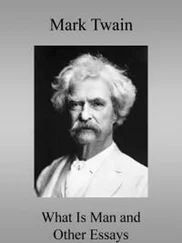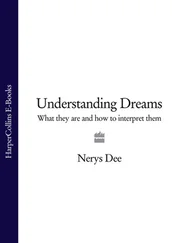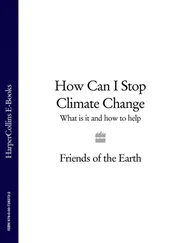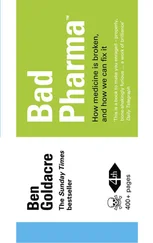NATO, as an inter-governmental organization, enjoys functional flexibility by virtue of its institutional features. But the allies determine in which direction it moves. For reasons we consider in Chapter 2, the US stands head and shoulders above the others. NATO has consequently mirrored American priorities more often than not. And that is relevant here because US foreign policy has historically been expansive, indeed global, in scope.
That impulse was especially evident in the 1990s. President George H.W. Bush had already imagined a reconfiguration of global politics – a US-led ‘new world order’ – as the Cold War came to an end and the US assembled a military coalition in early 1991 to reverse Iraq’s invasion of Kuwait. Bill Clinton, upon assuming office in 1993, was initially hesitant to take on the mantle of global leadership, but by its end his was an administration characterized by ‘global hyperactivity’, premised on a claim that the US was the world’s ‘indispensable nation’ committed to global democratic enlargement, the spread of free trade and, where necessary, military intervention to promote regional order. 40
Bush and Clinton are generally remembered as multilateralists, pursuing international cooperation for noble purposes. Yet both were clear that in foreign policy an American interest had to be served and that international organizations should be subordinate to that purpose. Such a proprietorial attitude was informed by a view that the Canadian and European allies were unwilling and unable to lead. Clinton’s reported views on Bosnia are instructive here. Concerned by 1995 that NATO was paralysed by crisis in the Balkans, ‘Clinton and his advisors decided’, one official noted, ‘that the only way to end the disagreements among the allies was to stop listening to them.’ American officials ‘would settle on a course of action’ and then expect the allies to fall in line. 41
After 9/11, American foreign policy shifted to the self-declared ‘global war on terror’. The so-called ‘Bush Doctrine’ that emerged in response was premised on ‘tak[ing] the fight to the enemy before they can attack us […] confront[ing] threats before they fully materialize [and] advanc[ing] liberty and hope as an alternative to the enemy’s ideology of repression and fear’. 42Such ideas lay behind the overthrow of the Taliban in Afghanistan, the invasion of Iraq in 2003, the US rendition programme and American counter-terrorist measures in places as far afield as the Philippines, Pakistan, the Horn of Africa and Yemen. Much of this activity was clandestine and unilateral. Where it did involve partners, it was often done ad hoc through coalitions of the willing. Insofar as NATO mattered, it was through the development of capabilities and doctrine that would support American efforts. US Secretary of Defence Donald Rumsfeld thus demanded in September 2002 that the allies develop expeditionary and rapid response forces. NATO’s answer was the 2002 Prague Capabilities Commitments, the development of the NATO Response Force, a major command structure reform and the 2002 Military Concept for Defence against Terrorism. ISAF, as we have seen, would be the signature mission that bore NATO’s commitment to this new global agenda, but NATO also mounted a training mission in Iraq and lent its support to the African Union in Somalia and Sudan.
The Obama administration came to power with the intention of getting America off its war footing – emphasizing diplomacy over intervention, and coalition building over unilateral endeavour. To its supporters, Obama’s foreign policy was characterized by caution, patience and empathy. Obama committed the US to the Paris Agreement on climate change and the Iran nuclear deal, opened up relations with long-time foes such as Cuba and ‘reset’ relations with Russia. 43Yet for all this, Obama remained committed to American exceptionalism and global military primacy. Distancing itself from Bush’s war on terror, the administration still managed to pursue an extensive policy of targeted assassinations and drone strikes. A desire to curtail overseas commitments was also only partial. The US drew down its forces in Iraq but changed tack in 2014 in order to counter the threat from ISIS. And in Afghanistan, while NATO’s combat mission was terminated in 2014, the smaller Resolute Support mission was committed to the country for the long term. Within this context, Obama expected much of the allies. All US administrations have bemoaned the problem of burden-sharing (see Chapter 3) and Obama, too, was clear on this point. If the US was to pour its energies into local crises, then it would do so, in the words of the 2015 National Security Strategy, by ‘mobiliz[ing] allies and partners to share the burden and achieve lasting outcomes’. 44Yet deferring to allies was good only insofar as America’s partners had something to offer. On matters of collective defence in Europe, the US remained as essential as ever. NATO’s Readiness Action Plan launched in the wake of the 2014 Ukraine crisis brought significant European and Canadian resources to the fore but was overshadowed by the US-led Operation Atlantic Resolve and the European Reassurance Initiative (which, despite the name, was an American effort).
Obama’s successor Donald Trump struck an intemperate attitude toward NATO. But even in the face of Trump’s criticisms, the Alliance was unable to break the spell of American leadership. The allies under pressure from Washington recommitted to increased defence spending and re-emphasized NATO’s role in countering terrorism. Insofar as the Trump administration could claim to have a signature foreign policy, it was to balance regional and global challengers – Russia and China (and, of a lesser order, Iran) – in a new era of great power competition. Alliances such as NATO were seen as material to that effort. 45In the case of Russia, that sat well with NATO’s traditional mission. But a policy for China (alluded to at the 2019 NATO Leaders’ Meeting) took the Alliance off into uncertain territory. Trump’s suggestion that NATO expand its mission and membership to the Middle East was even less well defined. 46
Liberal Ideas and Liberal Order
NATO’s task expansion has been made possible by alliance institutions, given shape by allied politics and driven by American ambition. Allied calculations here are best understood as ‘interests’. But interests co-exist with ideas – the beliefs which provide the broader setting of action, a desirable end state in its grandest sense and, linked to that, a roadmap that provides answers to why and how a particular course of action should be taken. 47Measuring the influence of ideas upon policy is a complex business, but in NATO’s case the task is made a little easier because the Alliance has explicitly articulated an ideational rationale for its endeavours.
The relevant ideas have been described by commentators as ‘Atlanticist’ or ‘multilateral’, but ‘liberal’ is the term which has stuck. In the Cold War, NATO’s liberal identity was, in part, a projection of the allies’ domestic democratic systems. But it was also defined in juxtaposition to NATO’s communist ‘other’, the Soviet bloc. The end of the Cold War’s ideological divide meant the liberal appellation became fuzzier. In its political (as opposed to economic) formulation, it has revolved around a belief in the sanctity of rights and the related position that such rights are universal and should be both protected and promoted – a view that goes back to the formation of the UN in 1945 and the adoption of the Universal Declaration of Human Rights in 1948. During the Cold War, NATO’s defence of liberal values was very much symbolic (hence the toleration of some distinctly non-democratic members among NATO’s ranks). But the seeming victory of ‘freedom, democracy, human rights and the rule of law’ at the Cold War’s end opened up new historic possibilities. 48The Clinton administration took the view that NATO, through enlargement and partnerships, should assume a new liberal mission of democracy promotion. This, moreover, would have geopolitical benefits. Democracies were viewed as essentially peaceable in their relations with each other. As NATO membership spread, therefore, so, too, would inter-state peace. 49Subsequent enlargements stuck to this narrative. The ‘big bang’ enlargement of 2004 sat explicitly with President George W. Bush’s ‘Freedom Agenda’. Obama commended Albania and Croatia’s entry in 2009 as contributing to domestic reform and regional stability. 50The Trump administration, not known for its support of democracy abroad, welcomed the entry of North Macedonia (NATO’s most recent member) in similar terms. 51
Читать дальше
